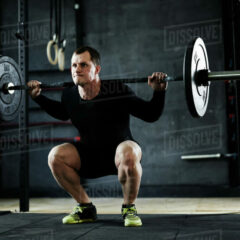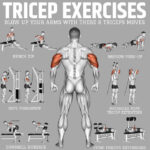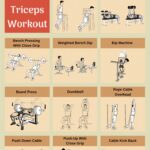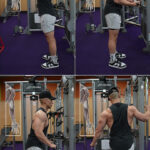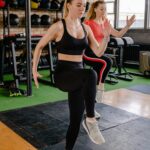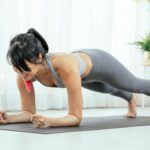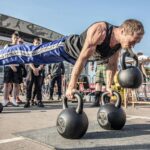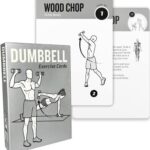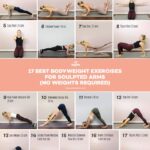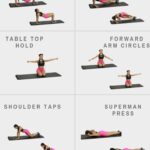https://weightliftingforpower.com/neck-exercises-for-athletes/
Neck Exercises For Athletes
Neck strength isn’t just about aesthetics. In sports, it’s a crucial factor in boosting performance. Athletes often overlook the neck, focusing more on the arms, legs, or core. However, a robust neck can significantly enhance overall athletic performance, serving as a stabilizer during many movements and helping maintain control during high-intensity activities.
Neck exercises offer a significant advantage in injury prevention. Athletes, especially those in contact sports, are constantly at risk of strains, concussions, and other neck-related injuries. Strengthening neck muscles creates a natural shield that absorbs impact and protects the head and spine. This proactive approach ensures athletes remain active and injury-free, empowering them to train intensively and achieve peak performance.
Beyond safety, a well-trained neck can enhance agility and coordination. Think about an athlete’s ability to change directions or maintain posture during strenuous activities quickly. Neck strength supports these actions by stabilizing the head, allowing better focus and quicker reflexes. This advantage can contribute significantly to an athlete’s competitiveness.
There’s a lot of misinformation out there about neck exercises, often leading athletes to neglect them entirely. However, targeted neck training can unlock new levels of performance. Understanding and dispelling these common myths is crucial for athletes who want to benefit from comprehensive training programs, empowering them with the proper knowledge.
Top Neck Exercises for Athletes: Build Strength and Flexibility
Strengthening the neck is essential for athletes aiming to boost their performance and protect themselves from injuries. Dynamic warm-ups are a great starting point, preparing the neck muscles for the more challenging exercises ahead. Warming up correctly not only gets the blood flowing but also wakes up the muscles, preventing strains during workouts.
One of the best strength-building exercises is the neck shrug. Athletes can perform this by standing or sitting, holding a light weight in each hand, and raising the shoulders towards the ears. Additionally, isometric holds, where you press your hand against your head in various directions, help develop neck endurance and resilience without equipment.
Flexibility is just as important as strength. Incorporating gentle neck stretches can significantly improve the range of motion. Stretching after workouts helps relax muscles and prevent stiffness, which can be particularly beneficial after high-intensity activities.
It’s worth investing in some basic equipment to enhance your neck workouts. Resistance bands or a neck harness can make a big difference in training efficiency. These tools offer versatility and enable progressive loading, which is key to building strength over time. As always, safety should be a priority, so athletes should ensure proper form and avoid overloading.
Personalizing Neck Training: Tailoring Exercises to Different Sports
Every sport has its own set of physical demands, and neck training should reflect those specific needs. For instance, contact sports like football or rugby generally require robust neck muscles to mitigate the impact of tackles and collisions. On the other hand, sports such as swimming or cycling might focus more on maintaining posture and reducing strain.
Successful athletes often fine-tune their neck workouts to align with their training regimens. Case in point: many rugby players dedicate time to neck braces and resistance-band exercises, while swimmers might focus on flexibility and endurance techniques. Customization is key in maximizing benefits and preventing unnecessary exertion.
Incorporating neck exercises into sport-specific routines can be highly effective. Athletes should assess their sport’s physical demands and match their neck workouts accordingly. This tailored approach not only supports peak performance but also aids in long-term development without risking burnout or injury.
It’s also crucial to watch for signs of overtraining. The neck, although resilient, can suffer from overuse like any other part of the body. Balancing the workload, monitoring fatigue levels, and allowing adequate recovery periods help in maintaining neck health and effectiveness. Understanding how to listen to your body’s signs ensures training remains sustainable and beneficial.
Integrating Neck Training into Your Regular Regimen: Tips for Success
Incorporating neck exercises into a regular training routine might sound daunting at first, but with a bit of planning, it can fit seamlessly into your schedule. Starting with short, focused sessions and gradually building up the intensity can help you become consistent without feeling overwhelmed.
Tracking your progress is crucial. It doesn’t have to be complicated either. Keeping a simple log of your exercises, the weights or resistance levels used, and noting any physical improvements can offer insights into your growth and where adjustments might be needed.
Safety is paramount when performing neck exercises. Ensuring you use proper form and technique is essential to avoid injury. Videos or guidance from a coach can help maintain correct posture and movement patterns during exercises.
Beyond exercises, your neck training program should encompass nutrition and recovery strategies. Nutrition plays a role in muscle repair and development. At the same time, recovery techniques, such as massages or rest days, are vital for preventing overuse and ensuring you’re ready for your next workout.
